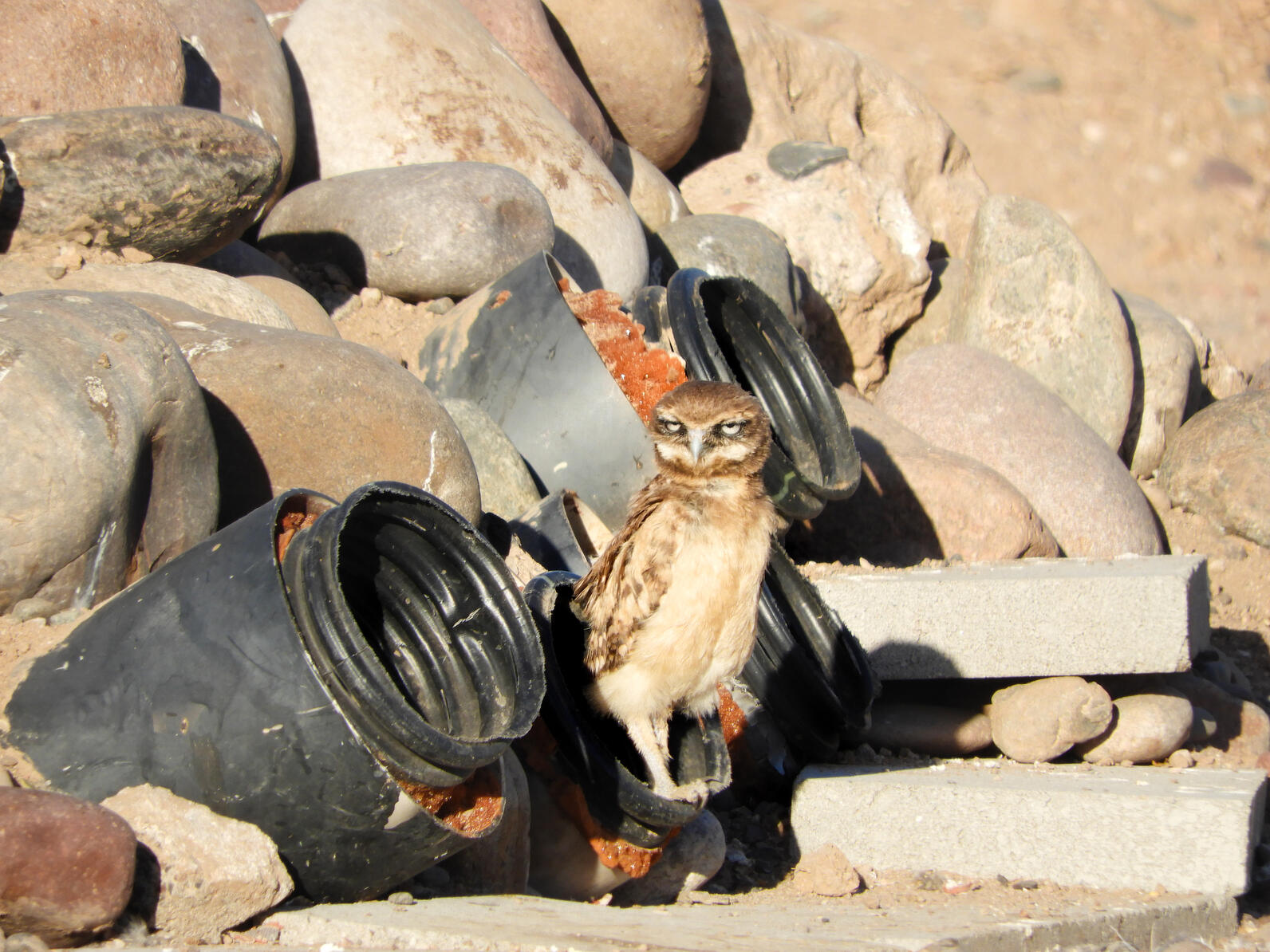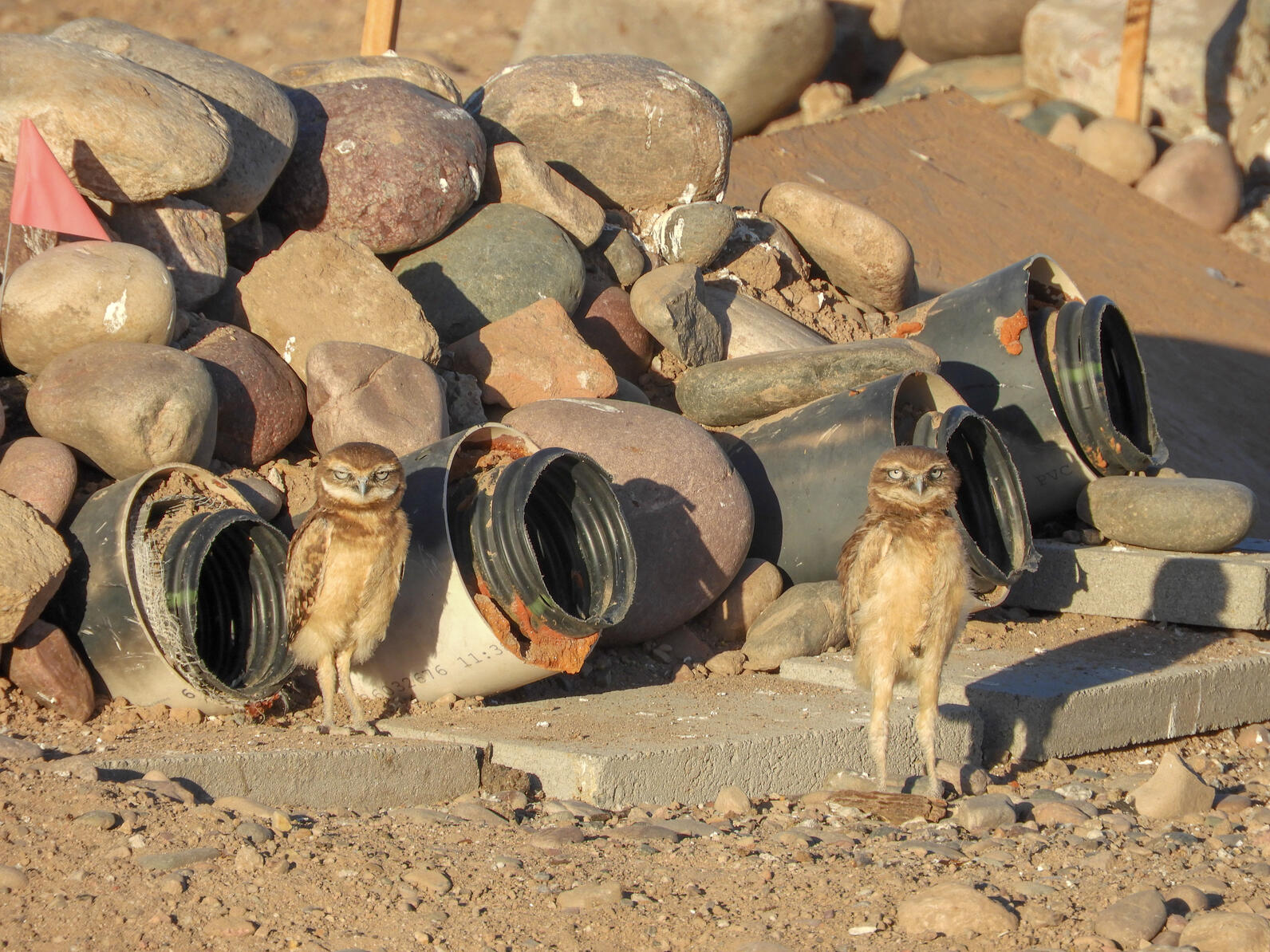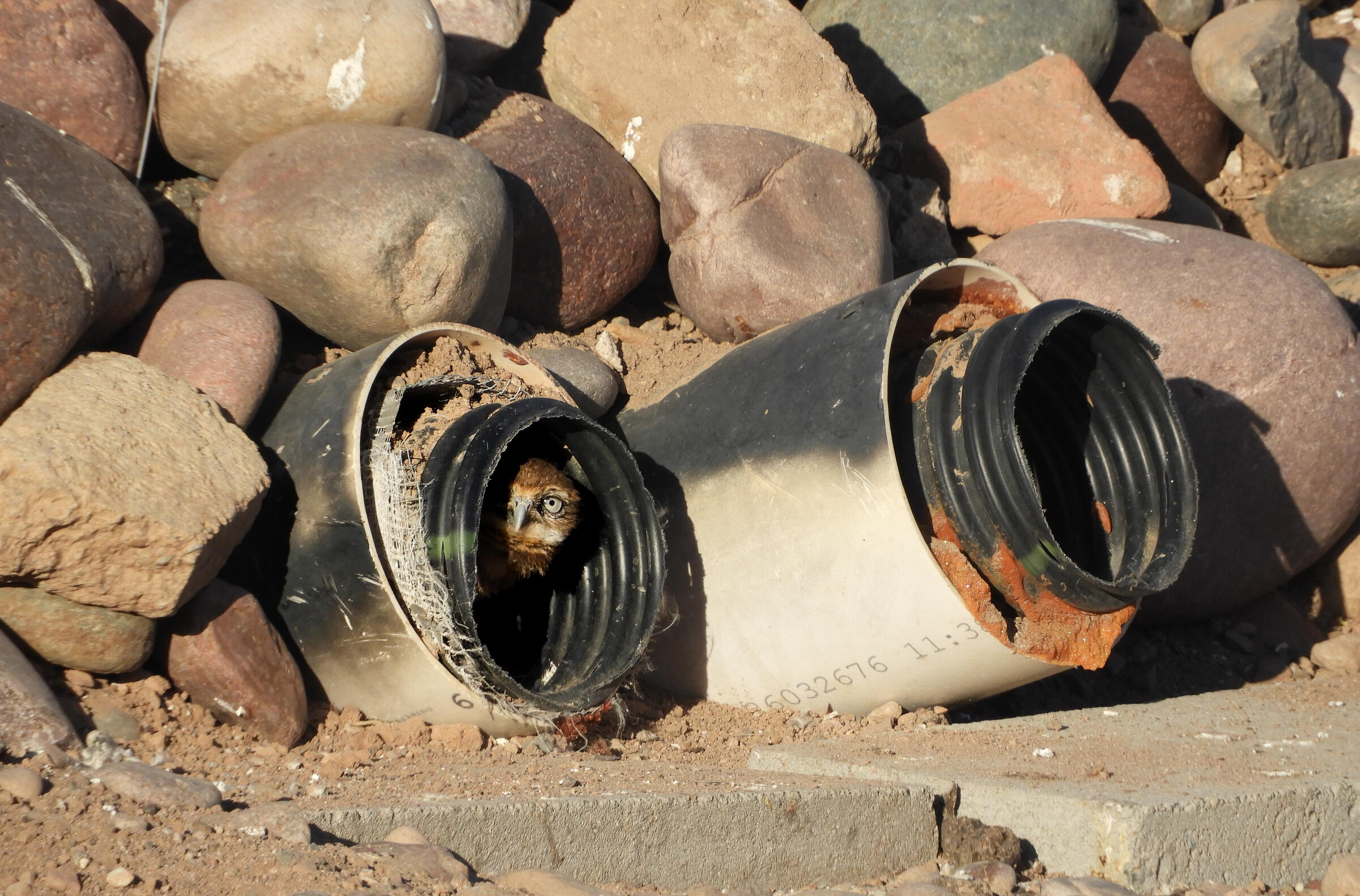Calluses from spring owl work have just about healed. Time for more owl releases, you say? Wait. What?
Audubon Arizona began partnering with Wild at Heart on Burrowing Owl relocation in 2013 and since then, thousands of volunteers have labored on the business end of a shovel to help re-home hundreds of Burrowing Owls. Veteran volunteers are used to the predictable schedule: we build burrows in the fall and winter, and construct and then dismantle release tents in the spring. The logic behind this schedule was to release the birds into their new homes during the breeding season.
Because the relocated birds are fed like royals for 30 days within a large, predator-free tent at the new site, egg-laying commonly occurs. Females will then begin incubation and stay with the clutch when the tent is removed. Likewise, male Burrowing Owls are hard-wired to find food for the incubating female and brood, so he is sticking around, too.

Over the years, this strategy worked—at least superficially. But we wondered…what was happening to all the baby owls we should have running around? Predation?
Thanks New Mexico State University graduate student Dejeanne Doublet’s two-year research project on Burrowing Owl relocation, we’ve uncovered evidence suggesting that releasing birds into new territories during the breeding season might not be the best idea.
Think about being uprooted from your home and plunked down in an unfamiliar place. All of a sudden, you’ve got a family on the way and you have no idea where the grocery stores are, where you might get mugged (or worse), and where your kids can safely play. All this adds tremendous stress—which we know is not good for people, and it is definitely not good for little owls. Some new owl families made it in the past, amazingly, but many did not. In many cases though, the adult owls would stick around even without a nest—definitely a better fate than being a development casualty, even if there was no brood to show off that year.
During Dejeanne’s study, she was able to radio track a total of 85 Burrowing Owls over the two-year period: 42 “wild” owls and 43 relocated ones. Data gleaned from this effort confirmed that life is rough for Burrowing Owls, period.

In one notable instance, a radio-equipped male was killed by an avian predator (it’s a bird-eat-bird world…) while his mate was at home with three owlets. Audubon members ponied up “mouse money” and Audubon staff provided a rather grotesque “meals on wheels” program for nearly a month. To our delight, the babies fledged… but then one day, the entire family was gone. Glumly fearing the worst, we stopped the supplemental feeding.
Then, out of the blue and weeks later, the female was seen again—just in a different area. It’s possible the family just moved house, but the point is, this sad drama is probably not uncommon, and the outcomes are often not as positive.
Like any good biologists, our next step is to reassess and try a new protocol. It stands to reason that releasing owls in the off-season, when they are not feeling the pressures of breeding and brooding, would be less stressful for the birds—but will they stay?
We are about to find out!
Winter releases are happening now—and your help is needed. Contact Cathy Wise for the most up to date schedule and to sign-up.
More information about Burrowing Owl relocation can be found here. If you're interested in learning more about Dejeanne's research, you can send her an email.





